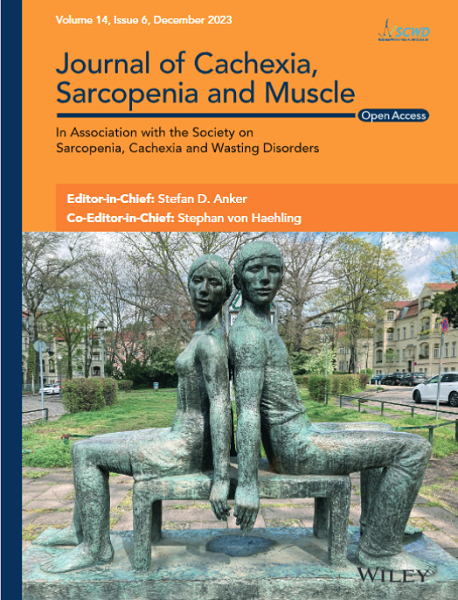Prevalence and Associated Factors of Sarcopenic Obesity Among Nursing Home Residents: A Cross-Sectional Multi-Centre Study
Abstract
Background
Obesity and sarcopenia are prevalent among older adults and associated with adverse health outcomes. The aims of the present study were to assess the prevalence of sarcopenic obesity, to evaluate the co-occurence of sarcopenia, obesity and malnutrition (risk) and to assess the association between specific characteristics and sarcopenic obesity/probable sarcopenic obesity in nursing home residents.
Methods
Three hundred eighty-seven nursing home residents with low to moderate care requirements from 20 nursing homes in Slovenia participated in the cross-sectional NutriCare study. Data on general patient characteristics, physical activity, usual dietary intake (estimated by a 2 × 24 h dietary recall and a food frequency questionnaire), malnutrition (risk) status (Mini Nutritional Assessment [MNA]), laboratory parameters, hand grip strength and body composition (estimated via BIA) were collected. Obesity was defined as a high body fat percentage. Sarcopenia was defined according to the European Working Group on Sarcopenia in Older People2 (EWGSOP2) criteria. Descriptive statistics were used to characterise the sample. Uni- and multivariable binary logistic regression analyses were performed to explore associations between the predictor variables and sarcopenic obesity.
Results
The prevalence of obesity was 90.7% according to high fat mass and 38.3% according to BMI (≥ 30). Prevalences were 27.6% (sarcopenia) and 24.5% (sarcopenic obesity), respectively. Probable sarcopenic obesity (low hand grip strength combined with obesity) was found in 37.6% of participants. A co-occurence of malnutrition (risk) and sarcopenia was present in 11.9%, whereas a combination of malnutrition (risk) and obesity was found in 28.2%. In 9.6% of the participants, a combination of all three phenomena—sarcopenia, obesity and malnutrition (risk)—was identified. The multivariable logistic regression model shows that higher age (OR 1.07; CI 1.02, 1.11), male sex (OR 2.3; CI 1.22, 4.5) and higher energy intake (OR 1.13; CI 1.04, 1.22) were significantly associated with sarcopenic obesity. Male sex (OR 2.30; CI 1.33, 3.98), higher age (OR 1.07; CI 1.03, 1.11), higher care requirements (OR 2.14; CI 1.20, 3.79), lower MNA score (OR 0.88; CI 0.80, 0.97) and metabolic equivalent of tasks (MET minutes/week) (OR 0.99; CI 0.98, 1.00) were significantly associated with probable sarcopenic obesity.
Conclusions
The study indicates a notable prevalence of obesity and sarcopenic obesity among nursing home residents with lower to moderate care dependency. These findings underscore the importance of optimising nutritional intake and other modifiable lifestyle factors associated with such health conditions and implementing them into targeted, individualised interventions to reduce the risk of obesity and sarcopenic obesity and to improve health outcomes.


 求助内容:
求助内容: 应助结果提醒方式:
应助结果提醒方式:


